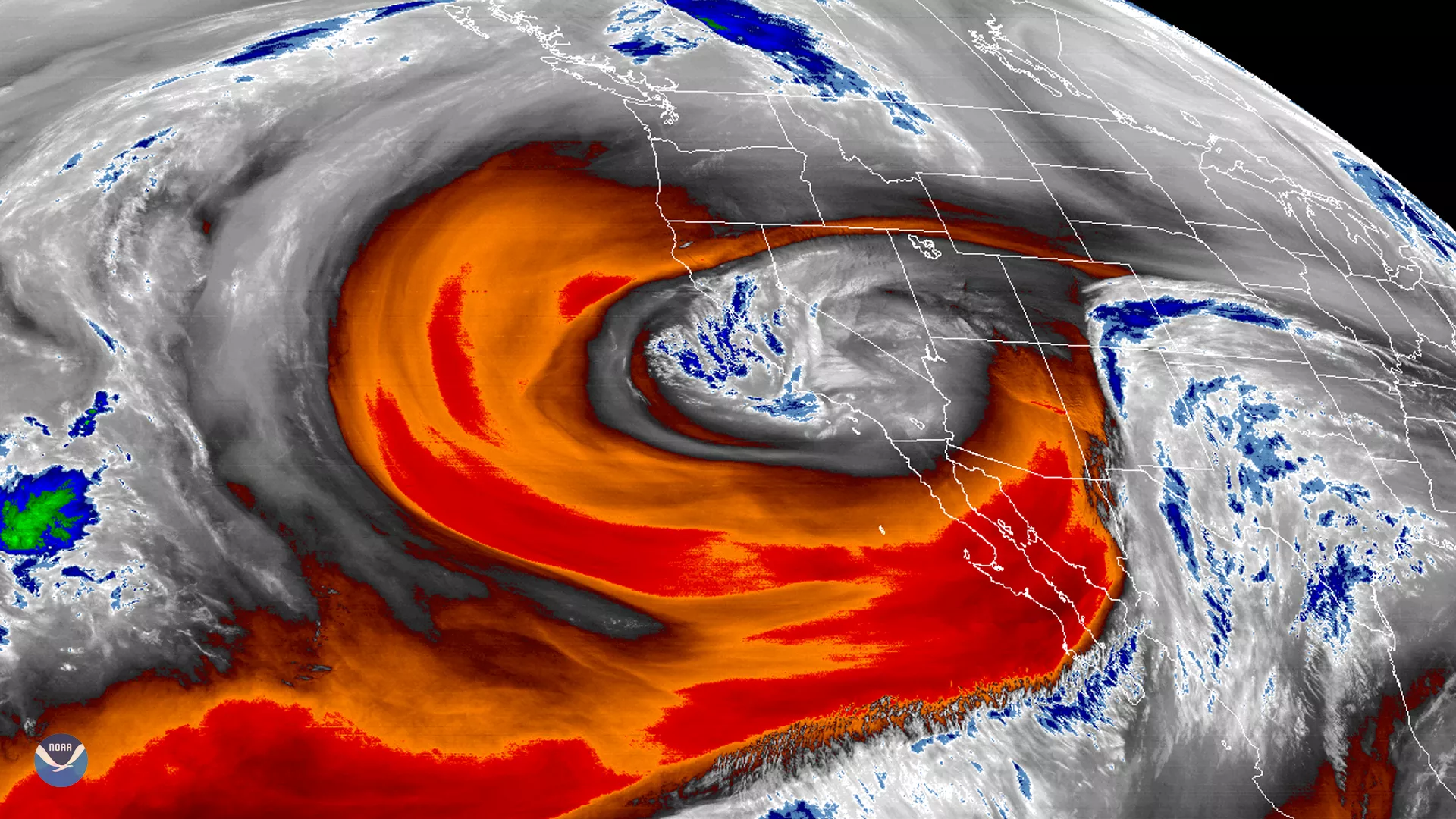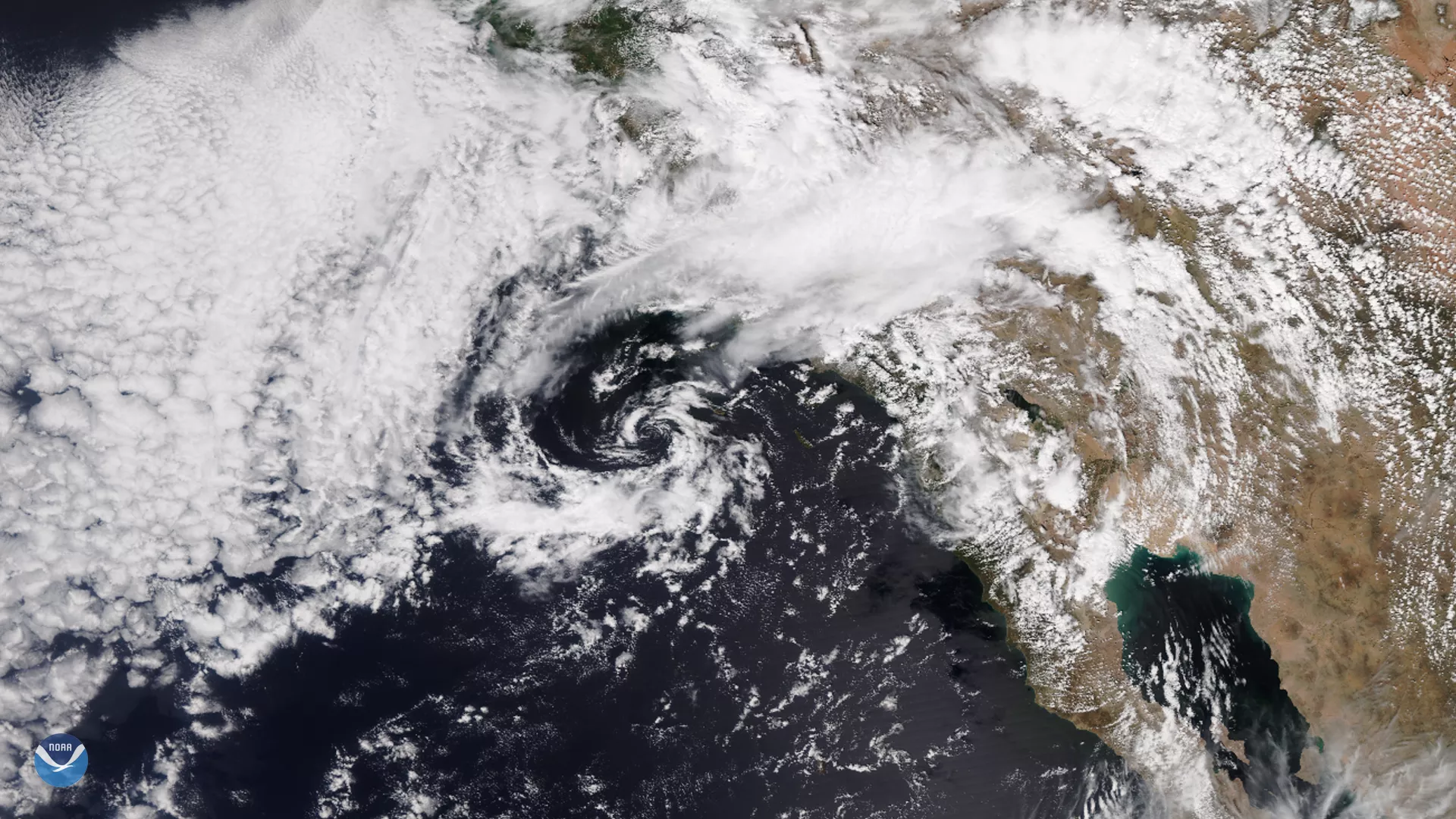
On April, 9, 2020, the GOES-West satellite zoomed in on a cut-off low off the coast of California via its mid-level water vapor band. This type of persistent low-pressure area has become isolated or “cut off” from the main westerly air current that is driven by the jet stream. These systems tend to sit nearly stationary for days, like a sailboat with no wind to push it, and may even move backward, against the prevailing airflow.
This late-season system, which has been affecting the region since the beginning of the week, is bringing a wintry mix of rain and snow to parts of southern California. Some locales have even seen record-setting amounts of rainfall, and more than a foot of snow has already piled up in higher elevations.
San Diego’s National Weather Service Forecast Office issued a Winter Weather Advisory for mountainous areas of San Diego County, as well as Winter Storm Warnings for the mountains of Riverside and San Bernardino counties Numerous Flash Flood Watches were also posted throughout the region for the potential of urban and small stream flooding.

The GOES-West satellite, also known as GOES-17, provides geostationary satellite coverage of the Pacific Ocean, from the east coast of Australia to the west coast of the United States. First launched in March 2018, the satellite became fully operational in February 2019.
The NOAA-20 satellite's VIIRS instrument scans the entire Earth twice per day at a 750-meter resolution. Multiple visible and infrared channels allow it to detect atmospheric aerosols, such as dust, smoke and haze associated with industrial pollution and fires. The polar-orbiting satellite circles the globe 14 times daily and captures a complete daytime view of our planet once every 24 hours.